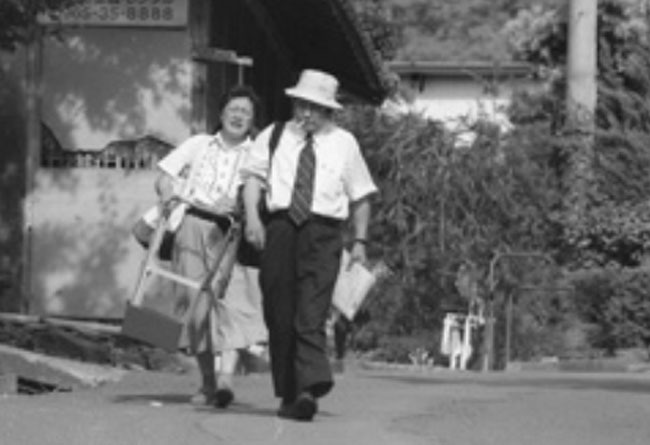Minamata nikki: Yomigaeru tamashii o tazunete
-
Réalisé par Noriaki Tsuchimoto • Écrit par Noriaki Tsuchimoto
-
Japon • 2004 • 100 minutes • Vidéo • Couleur
- Réalisation :
Noriaki Tsuchimoto - Écriture :
Noriaki Tsuchimoto - Assistanat de réalisation :
Motoko Tsuchimoto - Son :
Kubota Yukio, Motoko Tsuchimoto
- Production (structure) :
Siglo Ltd. - Ayant droit :
Siglo Ltd.
- N° ISAN :
non renseigné
Résumé
Pas de résumé français disponible.
In 1994, Minamata disease victims held an exhibition in Tokyo where portraits of the all the 1,080 people who had died of the disease by that time were displayed. Tsuchimoto Noriaki and his wife Motoko spent a year in Minamata collecting photos of the deceased. In this film Tsuchimoto discusses the contemporary community of Minamata and those suffering from the disease, and shows films and photographs from Minamata, including festivals, stage performances, music concerts, memorial services for the victims, etc.
"This wasn’t to make a film, but to create what we called “the ranks of the Minamata Disease dead” for the Minamata Tokyo Exhibition in 1996. We devoted ourselves to visiting bereaved families with a camera to reproduce photographs of the dead, but the fact is, it was a struggle to gather the photographs.
Our goal was to memorialize the names and faces of the victims, in the hope that the tragedy of Minamata Disease will never be repeated, but among the families there were some who simply wanted to forget. The gulf between our feelings and those of the families resulted in stress, and the fatigue wore us down. Here is what Noriaki wrote about that time:
“During those days, I picked up the camera as a kind of escape. Filming those moments was comforting, and it allowed me to breathe deeply before the next day. But, in the end, it was also a pleasure to film people through the seasons, the events, and the patients’ behavior. And there were subtle discoveries and surprises in the landscape we thought we knew well. Buoyed by these pleasures, we managed to gather the images of 500 people in the space of a year.”
Noriaki shot the footage on Hi8 using a Handycam and a Handycam Pro. I recorded the sound using a Sennheiser microphone. In the end, we had twenty-plus hours of video footage. This we edited down to two hours and screened for the public at the Minamata Tokyo Exhibition with live narration by Noriaki. This one-time-only screening was well received, and Noriaki’s narration was preserved. /// He later wrote the following:
“I watched the rough cut of the film again after a space of several years, and discovered something new in it. Acting in defiance of decay, the spirit of Minamata had become serene. Could we call this the water level that the soul of Minamata had attained, through long suffering? A direction that pointed toward the future was hidden in the footage. Perhaps this was the camera’s deception. At the same time, finishing the film was, for us, an unexpected ‘resurrection.’”
(Tsuchimoto Motoko)
Sélections et distinctions
- 2009 • YIDFF - Yamagata International Documentary Film Festival • Yamagata (Japon) • Film de clôture
Comment avoir accès au film ?
-
Édition DVD
- Il n'existe pas d'édition DVD à notre connaissance
-
Accès VOD
- Il n'existe pas d'accès en VOD à notre connaissance
- Distribution
- Aide sur les moyens d'accéder à un film
